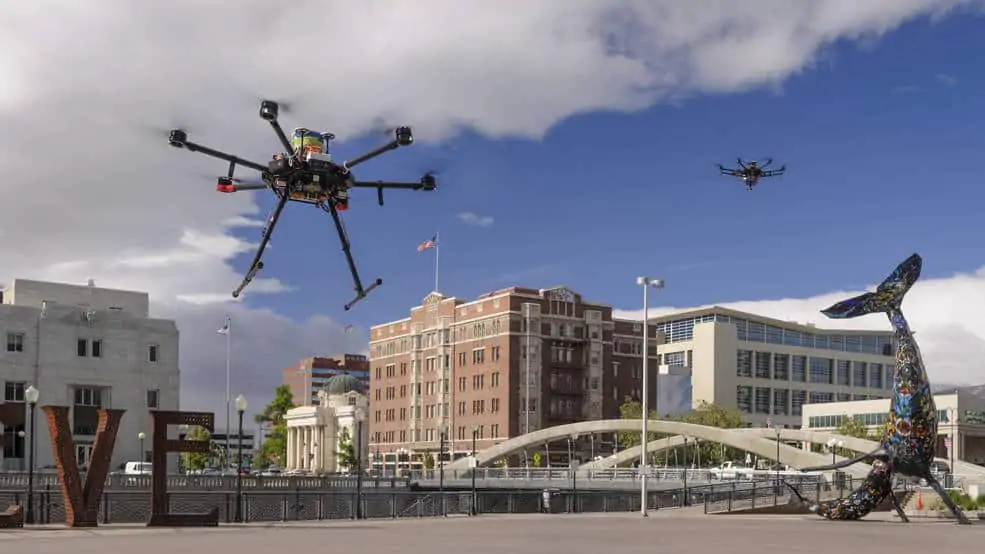
Ciconia and RelmaTech are partnering to deliver a unique vehicle-to-vehicle (V2V) onboard Control & Collision Avoidance System (C&CAS), which uses proven radio technologies to enable UAVs to avoid mid-air collisions.
Ciconia’s Founder and CEO, Moshe Cohen explained; “While planes and helicopters are easy to see, many drones have small signatures and operate in electrically noisy environments, which make their detection quite difficult. It is not practical to achieve the high rate of detection required to secure safe air traffic by means of DAA (Detect and Avoid.) Thus, the only method to achieve a high rate of detection that is stable and predictable in real time – which is also critical for security – is via radio transmission whereby each platform transmits its ID and location and each platform receives the transmissions from its surrounding platforms.”
Ciconia and RelmaTech have entered into an agreement to collaborate in the development and marketing of products to provide aerial management, control, tracking, collision avoidance and density control for manned aircraft and Unmanned Aircraft Systems (UAS). Both companies agree that the emerging and fast-growing world-wide market for high-end technology to enable high volume airborne vehicle operations, could be met with a suitable solution provided by the synergy of both company’s products and marketing efforts.
Ciconia specializes in decentralized conflict management and collision avoidance systems for aerial platforms and their innovative C&CAS has been successfully evaluated through both simulations and live flight tests.
RelmaTech specializes in secure global solutions for real-time vehicle and device identification, tracking and situational awareness across multiple applications. Enabled by a small light weight, low power, low cost, module that can be easily installed on all types of UAS, RelmaTech’s innovative Secure Integrated Airspace Management (SIAM) system is unique in that it provides Remote ID and tracking capabilities with minimum latency in both networked and non-networked environments.
To ensure the safe integration of UAS into the National Airspace, Ciconia and RelmaTech believe that each platform should include a C&CAS: an algorithm shared by all to resolve a conflict and avoid mid-air collisions, a robust V2V communication capability, a human interface to display the flight steering cues to pilots, remote and onboard, and in the case of UAS, an autopilot interface.
Ideally, regulators and industry need to set the regulations and standards for Remote ID in such a way that the Remote ID radio would fit the requirements of collision avoidance as well. If treated separately, new standards for Remote ID radios may not cover the application of a collision avoidance radio, potentially requiring drone manufacturers to install two radios on their drones instead of one.
“By considering the objectives of Remote ID and collision avoidance simultaneously, we believe we have a solution where one radio can serve both,” say Moshe Cohen and RelmaTech’s Co-Founder and CEO Philip Hall. “That RelmaTech has a V2V solution that supports Ciconia’s collision avoidance software and is embedded within its SIAM Remote ID and tracking capability is a huge step forward, especially when RelmaTech’s technology pre-empts the soon to-be-published ASTM F38 standard for UAS Remote ID.”


















